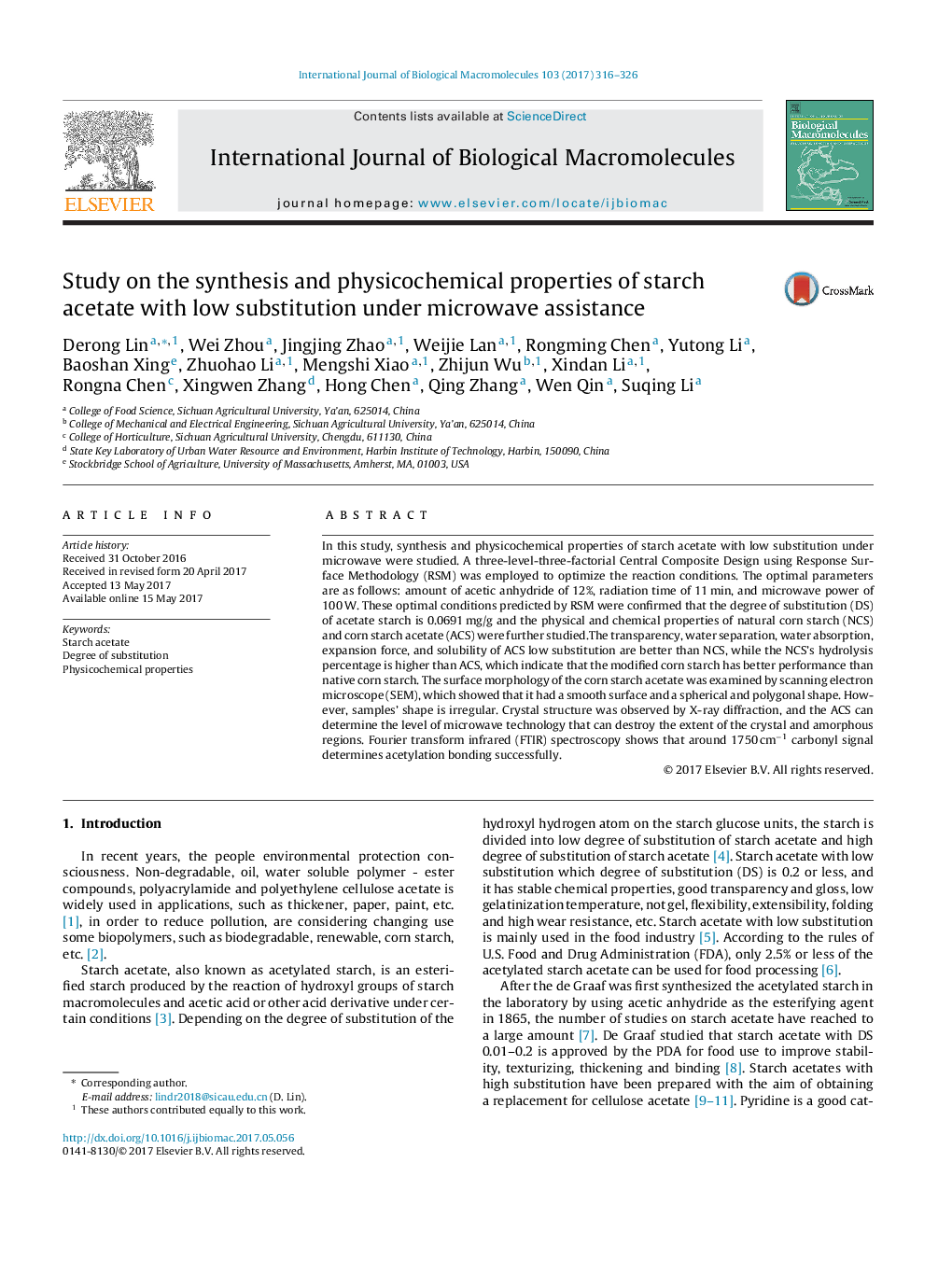| کد مقاله | کد نشریه | سال انتشار | مقاله انگلیسی | نسخه تمام متن |
|---|---|---|---|---|
| 5511858 | 1540215 | 2017 | 11 صفحه PDF | دانلود رایگان |
- This study aimed to improve starch's properties for potential application as biodegradable thermoplastic materials by chemically modify starch.
- Starch acetate with low substitution was prepared by microwave assistance.
- This study was to investigate structural properties of starch acetates with low substitution by comparing with native starch.
In this study, synthesis and physicochemical properties of starch acetate with low substitution under microwave were studied. A three-level-three-factorial Central Composite Design using Response Surface Methodology (RSM) was employed to optimize the reaction conditions. The optimal parameters are as follows: amount of acetic anhydride of 12%, radiation time of 11Â min, and microwave power of 100Â W. These optimal conditions predicted by RSM were confirmed that the degree of substitution (DS) of acetate starch is 0.0691Â mg/g and the physical and chemical properties of natural corn starch (NCS) and corn starch acetate (ACS) were further studied.The transparency, water separation, water absorption, expansion force, and solubility of ACS low substitution are better than NCS, while the NCS's hydrolysis percentage is higher than ACS, which indicate that the modified corn starch has better performance than native corn starch. The surface morphology of the corn starch acetate was examined by scanning electron microscope (SEM), which showed that it had a smooth surface and a spherical and polygonal shape. However, samples' shape is irregular. Crystal structure was observed by X-ray diffraction, and the ACS can determine the level of microwave technology that can destroy the extent of the crystal and amorphous regions. Fourier transform infrared (FTIR) spectroscopy shows that around 1750Â cmâ1 carbonyl signal determines acetylation bonding successfully.
Journal: International Journal of Biological Macromolecules - Volume 103, October 2017, Pages 316-326
